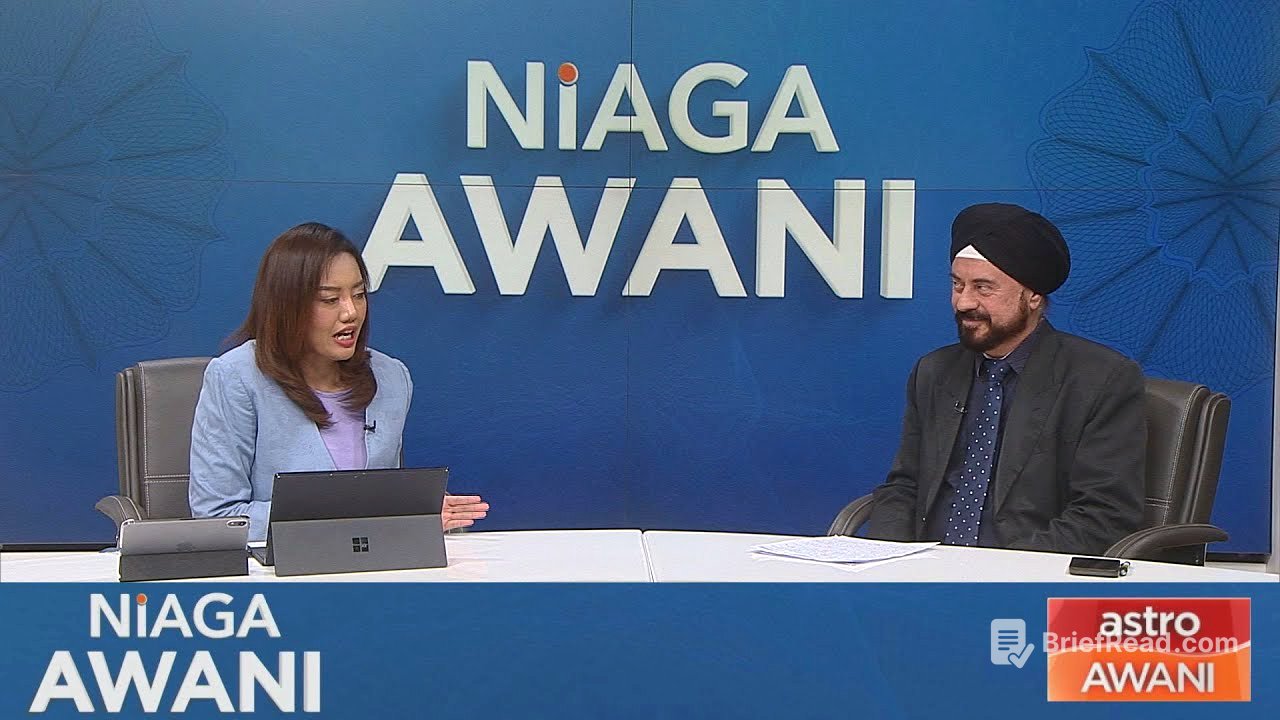TLDR;
This video discusses the phase three rollout of Malaysia's e-invoicing system, targeting businesses with annual revenue between 5 million and 25 million ringgit. It explains the temporary relaxation measures, including the use of consolidated invoices, to ease the transition for businesses. The expert emphasizes that e-invoicing is here to stay and is crucial for increasing tax compliance and collections. The discussion also covers practical steps for businesses to prepare, common mistakes to avoid, and the potential future integration of e-invoicing with other tax systems like SST and GST.
- Phase three of e-invoicing targets businesses with 5M to 25M ringgit revenue.
- Consolidated invoices are allowed for the first six months to ease transition.
- E-invoicing is essential for increasing tax compliance and revenue collection.
- Businesses should prepare now to avoid penalties and ensure smooth implementation.
- E-invoicing may eventually integrate with SST, GST, and transfer pricing reporting.
Phase Three of E-Invoicing and Initial Goals [0:00]
The third phase of Malaysia's e-invoicing system targets taxpayers with an annual turnover of 5 million to 25 million ringgit. Approximately 55,000 taxpayers are expected to be onboarded during this phase. The e-invoicing implementation has been expanded from the initial three phases to five, providing taxpayers with more time to become proficient in e-invoicing and implement the system efficiently.
Temporary Relaxation Measures for Phase Three Taxpayers [1:47]
For the first six months of phase three, taxpayers can continue issuing normal invoices but must submit a consolidated invoice to the IRB within seven days of each month's end. This consolidated invoice includes the details of the normal invoices issued, such as the amount and invoice number, without needing the detailed customer information required for individual e-invoices. This relaxation aims to help taxpayers prepare for full e-invoicing implementation, which is essential for increasing tax compliance and collections, potentially by 30-40%.
The Importance of Preparation and Consequences of Non-Compliance [3:47]
The grace period should be used for preparation rather than delay, as e-invoicing is a legal requirement with penalties for non-compliance. Failure to issue an e-invoice can result in fines ranging from 2000 to 20,000 ringgit per missing invoice. Taxpayers must train their staff and implement the necessary systems, which are becoming increasingly affordable.
Business-to-Consumer vs. Business-to-Business Transactions [6:02]
For business-to-consumer transactions, such as those at restaurants or supermarkets, an e-invoice is not required for each transaction; a consolidated invoice at the end of the day is sufficient. However, for business-to-business transactions, e-invoicing must be done on an individual basis for every transaction. The government and IRB are providing relaxation to allow taxpayers to prepare and become proficient in e-invoicing.
Practical Steps and Available Systems for E-Invoicing [7:12]
User-friendly e-invoicing systems are available, and the awareness of these systems needs to be increased. For example, businesses can use systems where customers can access a link on their receipt to enter their details and receive an e-invoice. These systems can be subscribed to on a monthly basis at affordable prices. An e-invoice is a digital representation of a transaction submitted to the IRB's portal for validation. The IRB provides a free invoice portal for this purpose.
The E-Invoicing Process and Benefits for Tax Authorities [10:11]
Once an invoice is submitted, both the seller and buyer are notified upon validation by the IRB. The buyer has 72 hours to reject the e-invoice. Accepted e-invoices are stored in the IRB's portal for ten years. This system allows tax authorities to monitor transactions and ensure that taxes are paid on reported income.
Common Mistakes to Avoid in E-Invoicing Preparation [12:36]
A common mistake is waiting until the last minute to prepare for e-invoicing. Businesses should understand the specific requirements, such as the need for self-billed e-invoices for imported materials within two months of customs clearance. A gap analysis should be conducted to compare current systems with the required systems.
Advanced Payments and Future Integration with Other Tax Systems [14:16]
Advanced payments now require a separate e-invoice, which is an additional transaction compared to traditional accounting practices. E-invoicing will allow for digitalized financial reporting and can be integrated with customs data for indirect tax purposes like SST and import duties. The data can also be used to assess related party transactions for transfer pricing requirements. The e-invoicing platform can accommodate GST if it is implemented in the future.









